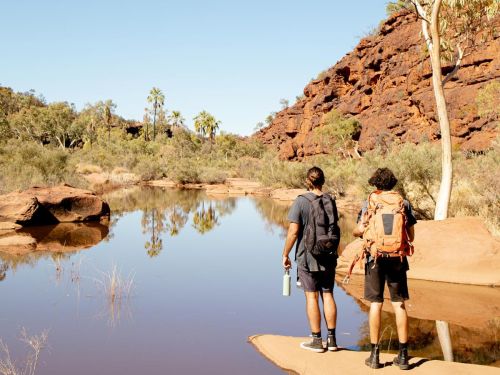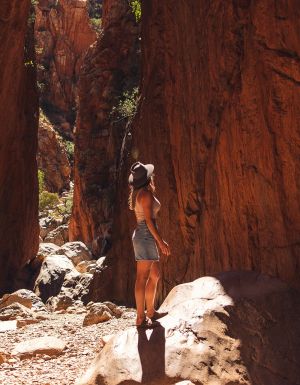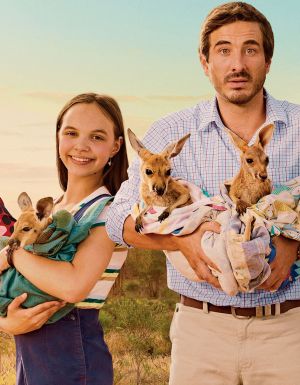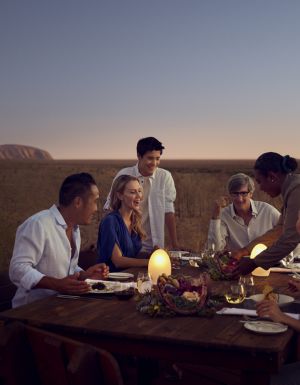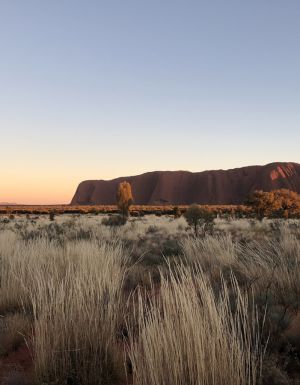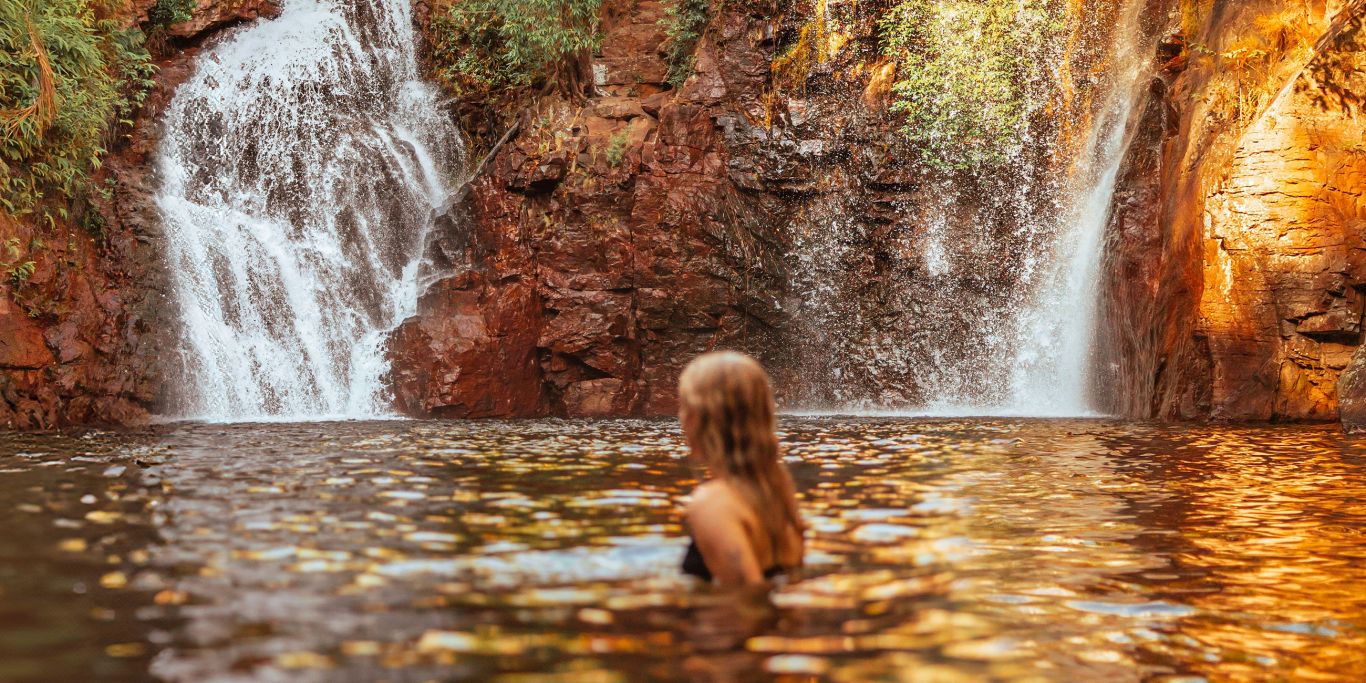The Red Cente’s Finke Gorge National Park tempts adventurers with its tall wavering palms, historic police camp ruins, and spectacular landscapes that inspired the renowned watercolourist Albert Namatjira.
If you’re an avid hiker, a nature enthusiast in search of the rare cabbage palm, or keen on some serious four-wheel-driving, you will adore Finke Gorge National Park. Covering an impressive 46,000 hectares in Alice Springs, it is home to ancient landscapes, Aboriginal cultural sites, Palm Valley, and the Finke River; one of the oldest water courses in the world. Here is the ultimate guide to exploring Finke Gorge National Park and Palm Valley.
How to get to Finke Gorge National Park
It takes about two hours to drive between Alice Springs and Finke Gorge National Park, 138 kilometres west of Alice Springs. Turn south off Larapinta Drive just west of historic Hermannsburg (Ntaria), the birthplace of artist Albert Namatjira.
You will need a high clearance 4WD to access the last 16 kilometres of track, which follows the sandy bed of the Finke River. Allow plenty of time to cover the distance as the road is rough. Entry requires an NT Parks Pass .

Palm Valley
Within Finke Gorge National Park, the utterly unique Palm Valley is home to about 12,000 red cabbage palms (Livistona mariae). It is a botanical haven, starkly contrasting the desert scenery that characterises much of the Red Centre.

What to see and do in Palm Valley
If you are visiting Finke Gorge National Park, you’ll need your hiking shoes. Palm Valley is a walker’s paradise, with trails winding through the gorge, revealing rock pools, ancient plant species and panoramic views of the surrounding cliffs.
From the Palm Valley car park, you have the choice of two walks: the two-hour Mpulungkinya Walk, which takes in an oasis of palms and returns to the car park across the plateau, or a shorter one-hour trek, the Arankaia Walk, which is a loop walk that meanders through an area of lush palms.

Nearby, at the Kalarranga car park, there are also two walking options: the family-friendly 45-minute Kalarranga Walk to the lookout and the two-hour Mpaara Walk, which meanders alongside the palm-fringed river before leading up the valley and over a saddle. The views from the top of the saddle are incredible: red rock formations for as far as the eye can see.

Day tours to Palm Valley
From Alice Springs, both AAT Kings and Emu Run offer day tours to Palm Valley. This includes a visit to the Aboriginal community of Hermannsburg, in the traditional lands of the Western Arrarnta people.

Where to stay in Finke Gorge National Park
For those looking to camp in the park, you have two options: Palm Valley Campground and Boggy Hole Campground. Make sure you book with NT Parks before you arrive.

The large Palm Valley Campground has plenty of shady sites for tents, camper trailers, and off-road caravans. Amenities are impressive for such a remote site: solar-powered hot showers, toilets, gas barbeques and designated firepits (remember to collect firewood before entering the park). Volunteer campground hosts are on site over the peak season (May to September).
You won’t find any facilities at the utterly remote campsite at Boggy Hole, a deep waterhole fed by a natural spring, which is a great spot for a cool dip. The track to Boggy Hole starts at the park’s main entrance and is about 20km long. It takes you through rocky gorges and red dunes, serving up stunning views of the landscape. Once you’ve arrived at the bush camp, a flat area next to the river, you can set up camp and kick back while watching the resident osprey fly above. Don’t forget to check out the nearby police station ruins – it’s off the beaten track but worth the effort.
Opening Hours
Finke Gorge National Park is open year-round, except when the Finke River is in flood. The cooler months (April to September) are the most pleasant time of the year to visit.



